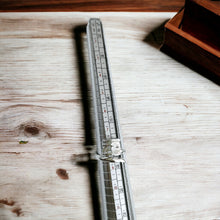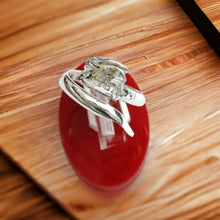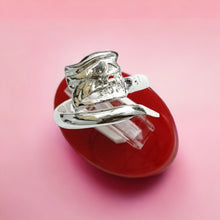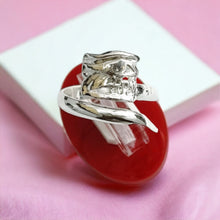
The Silver Goddess Wadjet Adjustable Ring: A modern homage to the ancient Egyptian deity Wadjet, symbolizing protection and prosperity. Crafted with sterling silver and designed for adjustable comfort, this ring embodies a timeless connection between past and present.
- History: Ancient Egyptian symbol of protection and royalty.
- Spiritually: Represents the goddess Wadjet, guardian deity and symbol of divine protection.
- Talisman: Worn as a charm for luck, protection, and spiritual connection.
- Handmade: Crafted with care by skilled artisans.
- Healing: Associated with healing properties and positive energy.
- Material: Made of pure silver for durability and elegance.
- Symbolism: Signifies strength, femininity, and divine guidance.
- How to Wear: Adjust to fit comfortably on any finger, wear with intention for spiritual connection and protection.
History Side For Those Who Are Interested
Wadjet, the ancient Egyptian goddess, holds a significant place in the pantheon of Egyptian deities and mythology. Throughout millennia of Egyptian civilization, Wadjet's role evolved and intertwined with the cultural, religious, and political landscape of the region.
Wadjet, often depicted as a cobra or a woman with a cobra's head, was associated primarily with protection, royalty, and sovereignty. Her name, which translates to "the green one," reflects her connection with the color green, symbolizing renewal and the fertile lands of the Nile Delta.
The origins of Wadjet can be traced back to the Predynastic Period of ancient Egypt (c. 6000–3150 BCE), where she was venerated as a local deity in the northern region of the Nile Delta, particularly in the city of Dep, known in Greek as Buto. In this early period, she was depicted as a cobra emerging from the papyrus marshes, a powerful symbol of protection against dangers, particularly venomous snakes.
As Egypt transitioned into a unified state during the Early Dynastic Period (c. 3150–2686 BCE), Wadjet's prominence grew alongside the rise of the pharaohs. She became closely associated with Lower Egypt, one of the two kingdoms that comprised unified Egypt, symbolizing its protection and sovereignty. Wadjet's significance expanded further during the Old Kingdom (c. 2686–2181 BCE), where she was revered as the protective deity of the king and his royal power. Pharaohs often wore the uraeus, a stylized representation of Wadjet as a rearing cobra, on their crowns or headdresses as a symbol of divine protection and authority.
Wadjet's cult continued to flourish throughout Egyptian history, with her influence extending into various aspects of daily life. She was invoked in religious rituals, amulets, and magical spells, believed to ward off evil and provide blessings to her devotees. Additionally, Wadjet was closely associated with other deities, such as Ra, the sun god, and Horus, the falcon-headed god of kingship, forming complex relationships within the Egyptian pantheon.
During the New Kingdom (c. 1550–1070 BCE), Wadjet's association with protection became more pronounced, as she was often depicted as the Eye of Ra, a powerful symbol of the sun god's all-seeing power and protection. This manifestation of Wadjet, known as the "Eye of Horus" or the "Eye of Ra," was believed to possess the ability to ward off evil and safeguard both the living and the deceased.
Wadjet's worship endured into the Greco-Roman period, albeit with changes influenced by foreign cultures and religious syncretism. Temples dedicated to her continued to receive offerings and reverence, albeit with shifts in her attributes and associations.
Despite the decline of ancient Egyptian religion with the spread of Christianity and later Islam, Wadjet's legacy persisted through cultural memory, archaeological artifacts, and modern interpretations. Today, she remains an iconic symbol of ancient Egypt's rich religious and cultural heritage, embodying concepts of protection, royalty, and divine authority.











